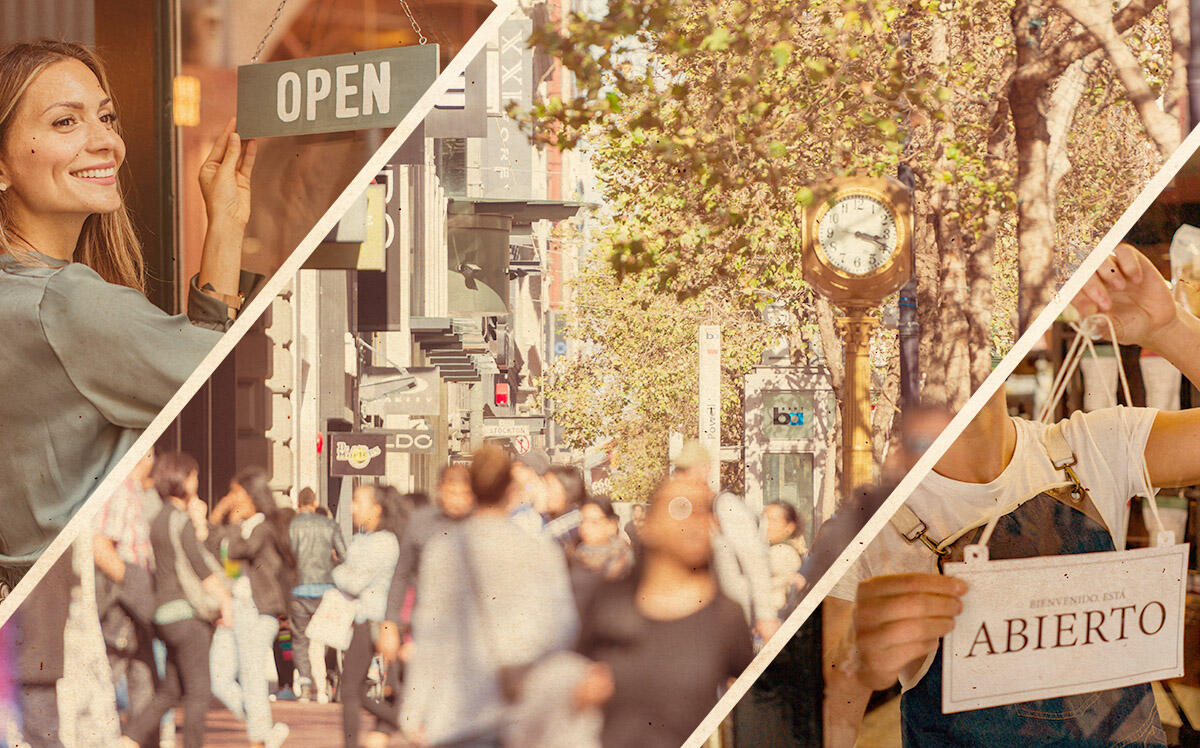A new report from Marcus & Millichap draws a direct line between the end of pandemic-related restrictions and the first 12-month run of declining retail vacancy rates in San Francisco in eight years.
“During spring 2021, the capacity limits were rescinded on indoor shopping and entertainment venues, which jump-started San Francisco’s retail recovery,” according to the brokerage’s second-quarter report.
A strong start to this year marked four consecutive quarters of positive net absorption in the market area, which includes San Mateo County along with San Francisco in the report. The commercial brokerage expects an additional boost to leasing activity stemming from the recent end of vaccine mandates for indoor operations at restaurants and bars.
“Retailers will take over 350,000 square feet of space off the market this year, marking the largest net absorption total in San Francisco since 2013,” according to the report.
A lull in commercial construction will also help absorption rates in the retail sector, with the vacancy rate expected to fall to 5.2% by year-end, putting it at slightly more than 1 percentage point above the pre-pandemic mark in 2019.
The upward trend offers some relief for owners of retail properties, which were drubbed by declining rents and rising vacancies during the early days of the pandemic. Retail rents, at an all-time high in the third quarter of 2019, fell by more than 10 percent once “shelter in place” mandates brought the city to a near standstill in the spring of 2020. The often-shifting regulations that followed, as well as the precipitous drop in tourism and lack of foot traffic from remote work, pushed the vacancy rate to almost 6 percent overall, with even higher vacancies in multi-tenant properties.
Single-tenant properties in the city continued to lead the pack with a 5.9 percent year-to-year rise in rents during the first quarter. That helped bring the market average asking rent to just under $40 per square foot per year. That offset an 8 percent dip in rents at multi-tenant retail properties. The market overall notche a 4.5 percent increase in asking rents.
The western half of the city appears to be driving the recovery, recording double-digit rent increases and vacancy rates well below the metro average, “heightening buyer interest” in the area, according to the report. The Stonestown Mall in the city’s southwest area near San Francisco State has higher foot traffic than before the pandemic, and has been attracting a combination of the work-from-home crowd and college students who came back to campus last fall.
Downtown San Francisco still has the highest vacancy rate in the metro area. That will likely go up soon since 100 Stockton––which takes up half a block right off Union Square and used to house the Macy’s Men’s store––is put 265,000 square feet of additional mixed-use space on the market when it re-opens later this year.
The eight-level building has already secured a tenant for its rooftop restaurant level—a high-end Japanesep-JS JPeruvian concept originally launched in London called Chotto Matte—and Union Square foot traffic has doubled since last year, according to a recent JLL report that linked the increased foot traffic to return-to-office trends.
That foot traffic will be a key marker for downtown’s recovery, according to the Marcus and Millichap report, which predicts that vacancies will remain above pre-pandemic levels until “midweek foot traffic in the CBD normalizes.”
